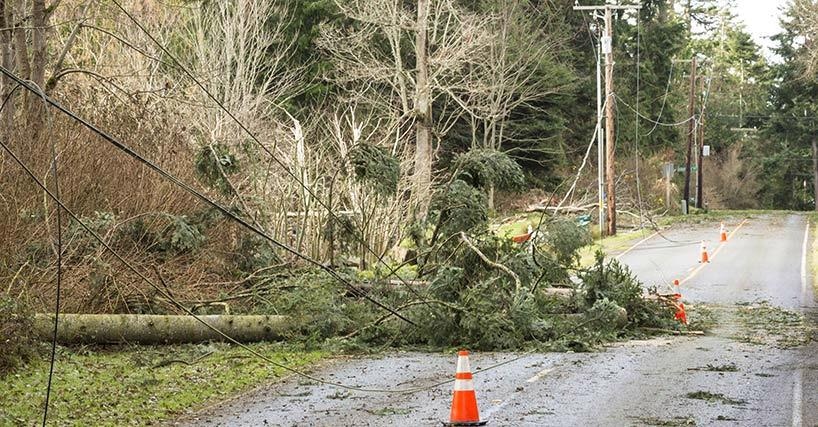Research carried out by Newcastle University is aiding to prepare for and mitigate storm damage before the commencement of extreme weather.

Image Credit: Newcastle University.
A new model has been developed by climate experts and engineers to anticipate the damage caused by adverse weather. This latest framework called “consequence forecasting” allows first responders to efficiently target resources before an extreme weather event, like Storm Eunice.
The pre-event decision-making model initially designs relationships between wind speed and faults on the electricity network. Further, the relationships are utilized to evaluate faults of electricity networks and possible customer interruptions. This model can be used as early as 24 hours before the occurrence of extreme weather events.
Reported in the journal Climate Risk Management, the study findings could allow efficient first response to regulate infrastructure systems affected by dangerous weather. With the help of the forecasting tools, predicting and preparing for storm damage will help decrease the societal impacts of extreme weather. This includes power loss for customers and fines for electrical distribution companies.
The study was headed by Dr. Sean Wilkinson of Newcastle University’s School of Engineering, and involved experts from the Met Office and EPFL, Lausanne, Switzerland. The team made use of an advanced weather numerical model to fabricate the prediction system.
The framework presented in the study employs an electricity distribution network endangered by forthcoming windstorms. But it could be applied equally to other infrastructure systems or elements of the built environment, or any kind of weather event.
Our model has the potential to change the way we manage weather and climate risks to our infrastructure networks. While electricity network operators already prepare extra resources when a storm approaches, predicting how many power lines may be blown down and where these are likely to be located will allow them to better target the necessary resources to more quickly repair any damage.
Dr. Sean Wilkinson, School of Engineering, Newcastle University
Wilkinson stated, “This is likely to become even more important in the future as our changed climate is predicted to produce more frequent and more intense storms and some of these may be beyond the experience of the people tasked to deal with them.”
This consequence forecasting is so important for planning emergency response in fast-evolving storms like Eunice. Our model could be used to regularly update energy companies and other infrastructure operators on the potential consequences of approaching storms, as forecasts are updated in real-time.
Hayley Fowler, Study Co-Author and Professor, School of Engineering, Newcastle University
Hayley Fowler adds, “This is particularly relevant since the first very high-resolution climate models, which are also used for today’s weather forecasts, predict a significantly greater increase in the frequency of severe winter storms in Europe with climate change.”
Journal Reference:
Wilkinson, S., et al. (2022) Consequence forecasting: A rational framework for predicting the consequences of approaching storms. Climate Risk Management. doi.org/10.1016/j.crm.2022.100412.